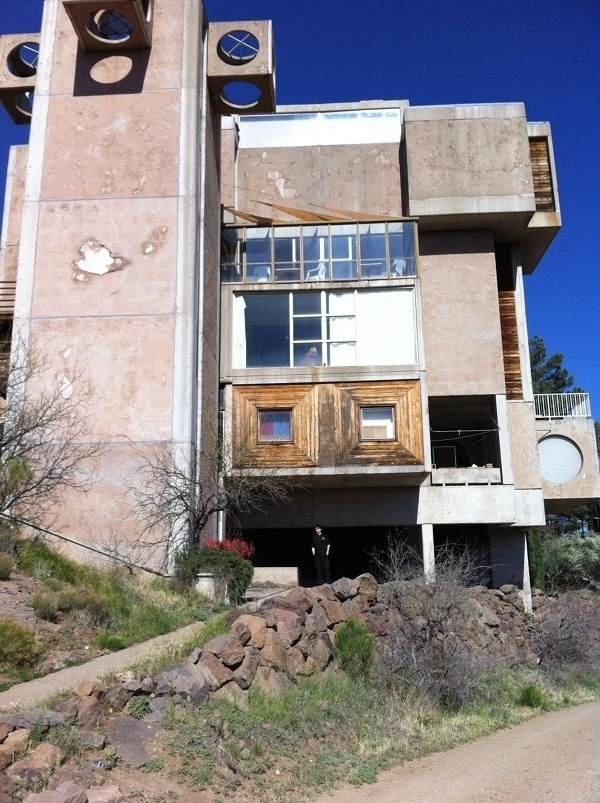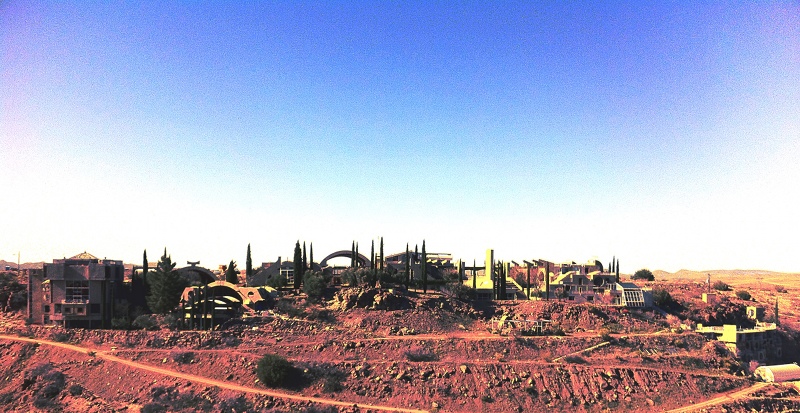We (meaning my family) visited Paolo Soleri‘s Arcosanti in the high desert north of Phoenix today. Arcosanti is an attempt at an “arcology” meaning a dense urban structure that lives in harmony with the ecosystem around it. The term is a portmanteau of “architecture” and “ecology,” and the original motivator for the site was to prove that dense urban living without cars and yards could be ecologically sensible and could inspire a sense of connectedness and community that has been lost in the suburbanization of America.
The facility is both amazing in its vision and somewhat dated in its approach. The limitations arise from its beginnings in the 70s and the available technology at that time. Only recently have photovoltaic panels been introduced. There is no real exploitation of wind power. Food self-sufficiency is only beginning to be addressed with greenhouses. It’s no biotecture but, arguably, it is a primary intellectual bedrock for new urbanism and green building.
 We hiked out to the observation platform, we toured the ceramics facility and foundry, we bought bells and T-shirts, and I picked up a copy of Paolo Soleri: What If? Collected Writings 1986-2000.
We hiked out to the observation platform, we toured the ceramics facility and foundry, we bought bells and T-shirts, and I picked up a copy of Paolo Soleri: What If? Collected Writings 1986-2000.
It’s a flawed book filled with a unique form of craziness. I remember that Teilhard de Chardin-style abstract craziness from my late teenage years when I read Omega Seed, but early on in this new compendium there is an admission by the compiler that there very well may be a private aspect to the ideas that fuel the Soleri way of art that are inaccessible to rational thinking and imperfect in any linguistic rendering:
For the best artists, thought runs on a track alongside art and does not touch it, does not converge, leaving for the art the nondiscursive, the ineffable part that cannot be treated adequately by thought, by ratiocination. But belief is another matter. It is private…almost beyond confession.
We sense that immediately as the compiler tries to frame Soleri’s aesthetic philosophy with Continental notions of Eternal Return, and then invokes Universal Turing Machines to try to attach a mathematical underpinning for the idea of progressive improvement of the human condition. It’s an odd cult of change that is grasping for justification in a private language of design and aesthetic realization. At its best it provides motivation for the forms and functions that we observe, but at its worst it was fuel for the kind of egotism that Soleri’s mentor, Frank Lloyd Wright, was so famous for.
